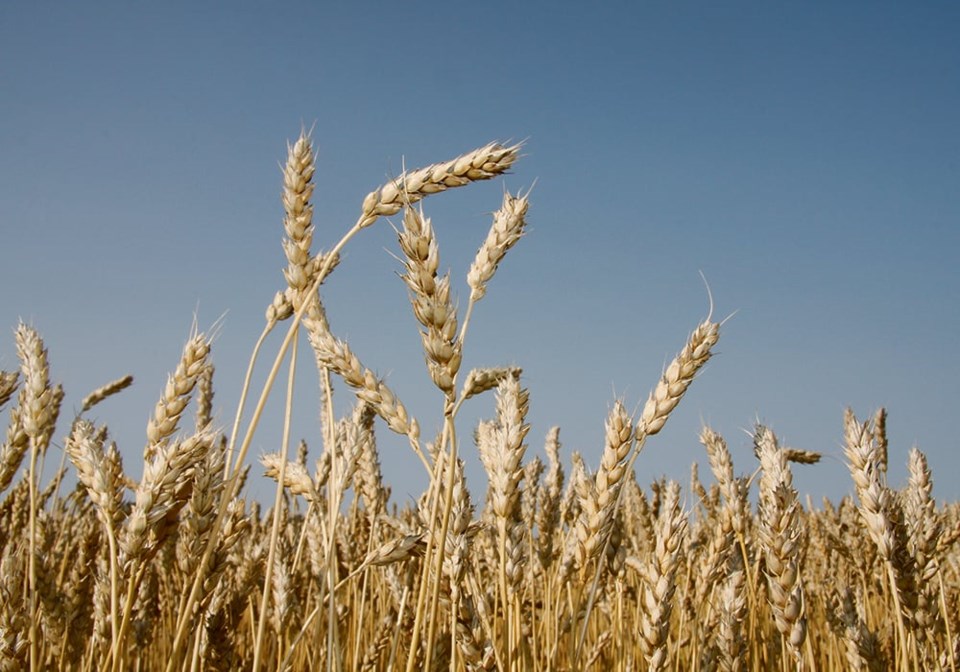WESTERN PRODUCER — The market fundamentals for spring wheat are bullish, says an analyst.
“I think you’re probably going to be looking at better pricing opportunities here in the future,” said MarketsFarm analyst Bruce Burnett.
Strong demand combined with supply problems in key export markets would suggest the crop is undervalued.
Minneapolis spring wheat December futures have tumbled by more than US$2 per bushel between mid-summer and early fall. That doesn’t make much sense to him.
“Are the current futures undervalued? Yes, I think they are,” said Burnett.
Mercantile Consulting Venture said in a recent article written for the Saskatchewan Development Commission that one key market is seeing a shortage of high protein spring wheat.
“Quality spreads in the (European Union) are the widest they have been in over a decade,” said Mercantile.
“The region is oversupplied with feed wheat and is short on high protein wheat.”
The European Commission, the administrative arm of the EU, recently raised its 2023-24 wheat import estimate by 2.5 million tonnes to 6.5 million tonnes.
“The increase is from higher volumes of wheat being imported from Ukraine and the larger need for high-quality wheat,” said Mercantile.
Burnett also thinks there will be more demand for spring wheat out of the EU, especially for Canadian product.
But one day after the European Commission came out with its forecast for increased imports, Minneapolis spring wheat futures prices tumbled by $0.42 per bu.
That was in response to the United States Department of Agriculture’s .
In that report, the USDA pegged U.S. spring wheat production at 13.7 million tonnes. That is 1.6 million tonnes more than the trade was anticipating and a 605,000 tonne increase over the previous year.
There was also some bearish news for the spring wheat market coming out of the U.S. Wheat Associates’ weekly harvest report.
It shows that the U.S. hard red winter wheat crop is averaging 12.6 percent protein based on 462 samples. That is one full percentage point higher than the previous five-year average.
U.S. hard red winter wheat production is up 10 percent compared to last year but down 15 percent versus the previous five-year average.
Canada is the other major supplier of high protein wheat to overseas markets. , a 12.4 percent drop from last year.
Burnett said North America’s spring wheat exports have been strong so far in 2023-24. He expects the U.S. will end up shipping out more spring wheat than hard red winter wheat, which is highly unusual.
A couple weeks ago, U.S. HRSW with 13.5 percent protein was trading at a slight discount to U.S. HRWW with 11 percent protein.
The market has since adjusted to more traditional spreads, but spring wheat is still in high demand. He thinks the USDA will have to increase its spring wheat export number by 20 to 30 million bu.
Russia and Kazakhstan had “horrible” spring wheat harvests this year. for those two countries.
Australia’s wheat production is expected to plummet by 36 percent to 25.4 million tonnes due to El Nino. Burnett estimated that about three million tonnes of that will be high protein wheat.
North America’s strong export program combined with poor crops in the Black Sea and Australia has Burnett scratching his head about the slumping spring wheat prices.
“It doesn’t make a lot of sense to me to be honest,” he said.
His only explanation is that funds have shorted wheat substantially in response to Russia’s huge winter wheat crop and Egypt’s lackluster buying and that bearish sentiment has spilled over into the spring wheat market.
As a result, Burnett doesn’t see spring wheat futures returning to the $9 per bu. range soon, unless serious problems emerge with the 2024 winter wheat crops in one of the major producing regions.
But he thinks there is still some limited upside for spring wheat prices even without a disaster.
Contact [email protected]
Bookmark SASKTODAY.ca, Saskatchewan's home page, at this link.




